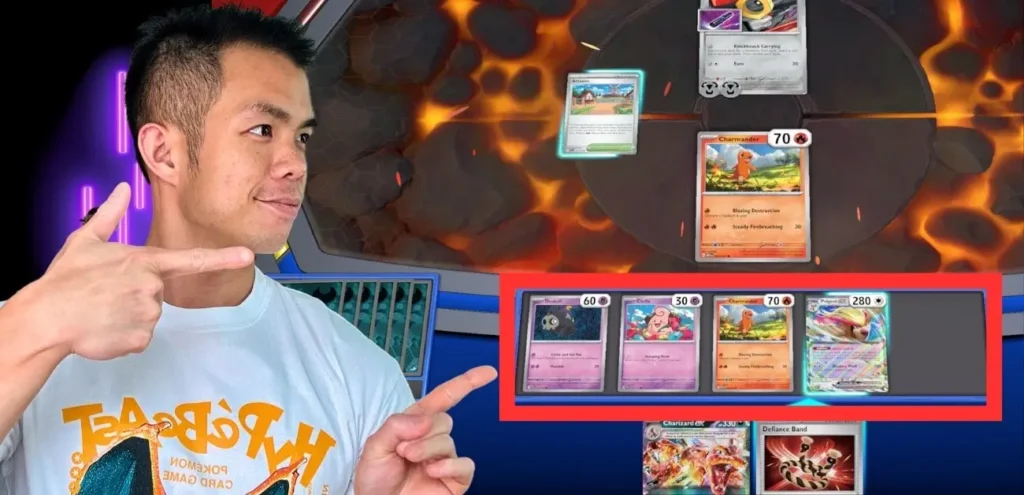The bench in Pokémon TCG is where up to five additional Pokémon are placed. Benched Pokémon can evolve, use abilities, or be swapped into the Active Spot when needed.
This post may contain affiliate links. See our affiliate policy for more information.
To a newbie, the bench is one of the overlooked mechanics in playing Pokémon cards. But I promise you- battles are won and lost on the bench, and good bench management can absolutely make you a better player.
Let’s dive into what the bench is, the rules you need to know, and how to manage your bench like a PTCG Pro.
Key Takeaways
- The Bench is a reserve zone where you can place up to five Basic Pokémon.
- Benched Pokémon can be affected by card effects, evolve, hold Tools, and have Energy attached.
- Only Basic Pokémon can be benched directly.
- Retreating swaps Active and Benched Pokémon.
- Master bench management skills to become a better player.
Why The Bench In Pokémon TCG Is Important
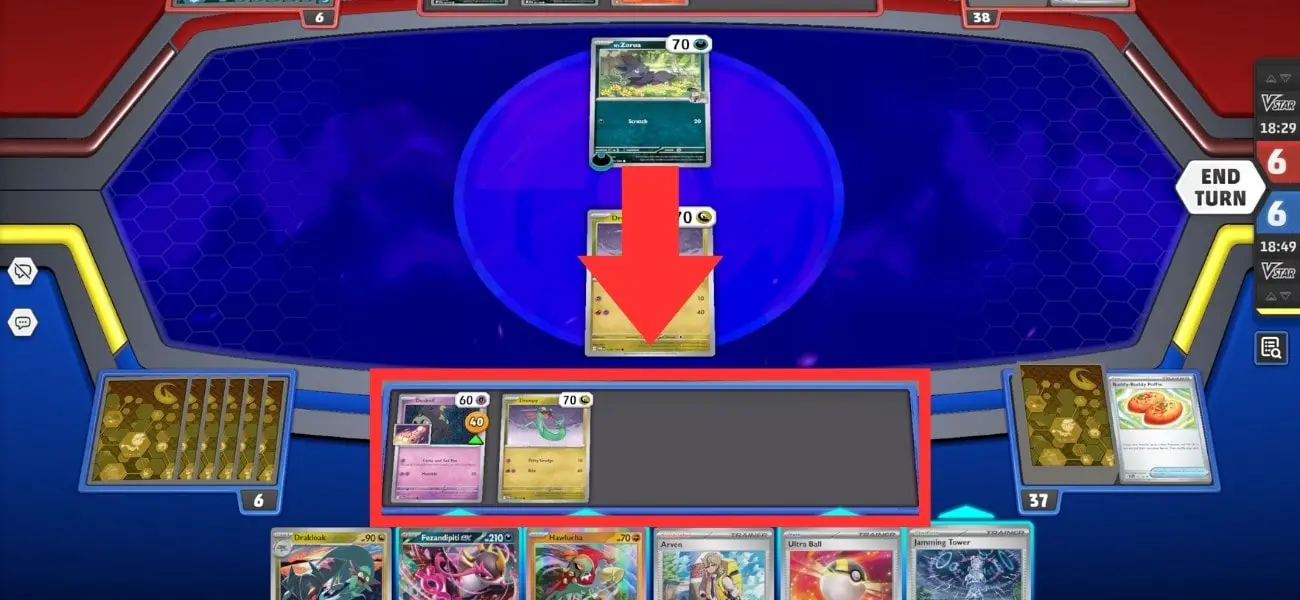
On a basic level, your Pokémon TCG Bench is your dugout. Your reserve.
It’s where up to five Pokémon hang out while your Active Pokémon attacks and defends. They aren’t just spectators though.
The Bench is the engine room of your deck. It’s where your setup happens, your combos begin, and your win condition quietly builds.
Skilled players treat their Bench like a staging ground. You evolve Pokémon there, charge them up, trigger support Abilities, and keep backup attackers ready to rotate in.
Think of it like chess- the Bench is your back line, and what you put there sets the tone for your entire battle strategy.
Most importantly- you lose the battle if your Active is KO’d and your Bench is empty.
Take home message?
The bench is a key area of the Pokémon TCG battlefield. So let’s dive into the rules of the bench you need to know.
Pokémon TCG Bench Rules
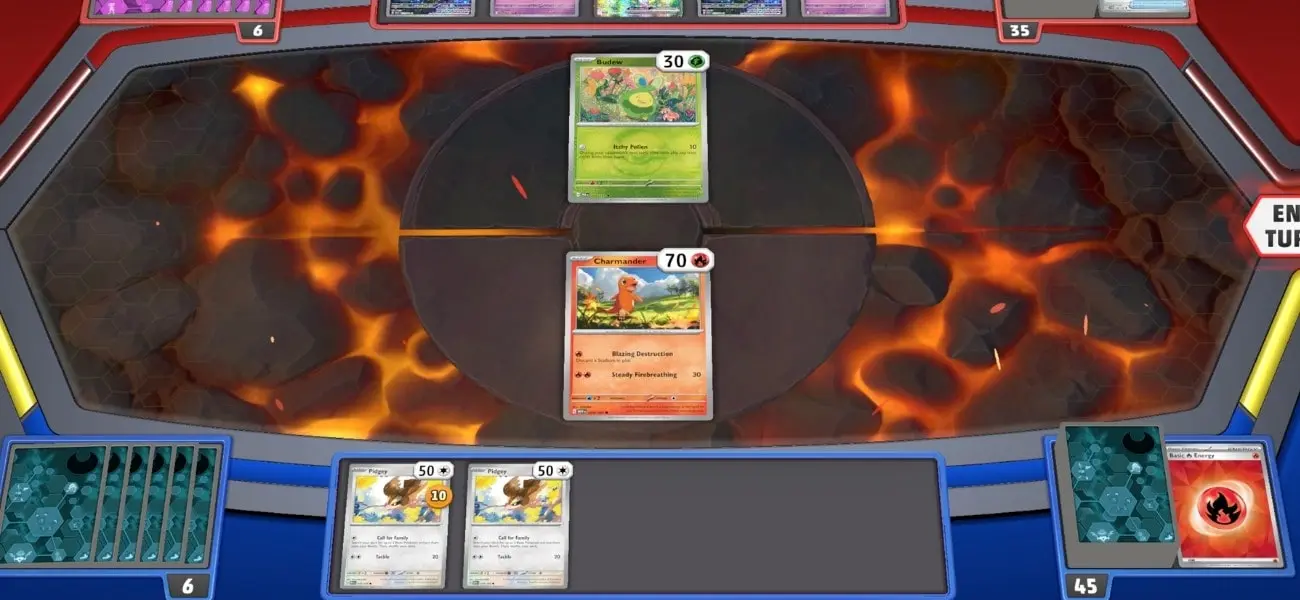
The rules you need to know for benched Pokémon:
1. Benched Pokémon Are “In Play”
Pokémon in your hand are technically in play as soon as they land on your bench. This is important when using card effects that change based on the “number of Pokémon in play”. You and your opponent both have 2 benched Pokémon each? That’s 6 Pokémon in play (including your Actives). Got 3 benched Pokémon? That’s 8 Pokémon in play. You get the idea.
2. Benched Pokémon Can Be Set Up As Normal
Pokémon on your bench can have Energy attached, evolve, and hold Item Tools just like the Active. Crafty players use the bench to charge up Pokémon whilst the Active acts as the sword and shield.
3. Five Pokémon On The Bench Max
You can have up to five Pokémon on your Bench unless Area Zero Underdepths (SCR 131) is in play, which expands both players’ bench to 8 slots. This has been standard forever, and it’s still the case in 2025. If your Bench is full, you cannot bench another Pokémon until a new slot opens from a Pokémon in play being KO’d or put back into your hand by a card effect.
4. Only Basic Pokémon Go From Hand To Bench
By default, you can only put Basic Pokémon on the bench. If you want a Stage 1 or Stage 2 on your Bench, it has to evolve from a Basic or Stage 1 Pokémon that has already been benched for a turn.
5. Retreating To Bench Is Allowed Once Per Turn
You can swap your Active Pokémon with a benched Pokémon once per turn. This is called retreating. To do this, you must discard Energy equal to the Active Pokémon’s Retreat Cost. This does not end your turn and your new Active can still attack. Learning how to retreat is a vital skill in itself, allowing you to preserve important Pokémon, cure special conditions, and more.
5. Benched Pokémon Can Use Abilities
Unless stated otherwise in the card description, Pokémon Abilities can be used from the bench. Skilled players often fill their bench with Support Pokémon that have an array of useful abilities such as drawing, card searching, and more.
6. No Attacking From The Bench
Only Active Pokémon can attack by default. This rule has been in place ever since Pokémon cards were first released. But in 2025, Alakazam ex (MEW 065) broke that tradition with Dimensional Hand– the first-ever attack usable from the Bench.
7. Benched Pokémon Can Take Damage
Attacks are usually targeted towards the Defending Active Pokémon. But bench attackers can bypass the Active to “snipe” at the bench. These types of attacks are clearly stated with “This attack deals x-damage to your opponent’s benched Pokémon. Abilities that place damage counters can also hit the bench directly.
8. Bench Damage Ignores Weakness & Resistance
Weakness and Resistance do not apply to bench attacks. That means a 20-damage bench snipe always does 20 damage. No doubling due to weakness. No resistance reductions. You’ll see this rule printed directly on the attack text to make it super clear.
9. Pokémon On The Bench Can Be Knocked Out
Just like the Active, benched Pokémon can be knocked out if it takes damage equal to or more than its HP. Yup. Whilst the bench is safer than the Active Spot, it’s still not 100% bulletproof.
Bench Management In Pokémon TCG
Now you know the basic rules of the Pokémon TCG bench. You’re ready to start slaying, right? Not quite.
To win Pokémon TCG battles consistently, especially at a competitive level, you need to know how to manage your bench.
Essential bench management tips in Pokémon TCG:
1. Always Have At Least 1 Benched Pokémon
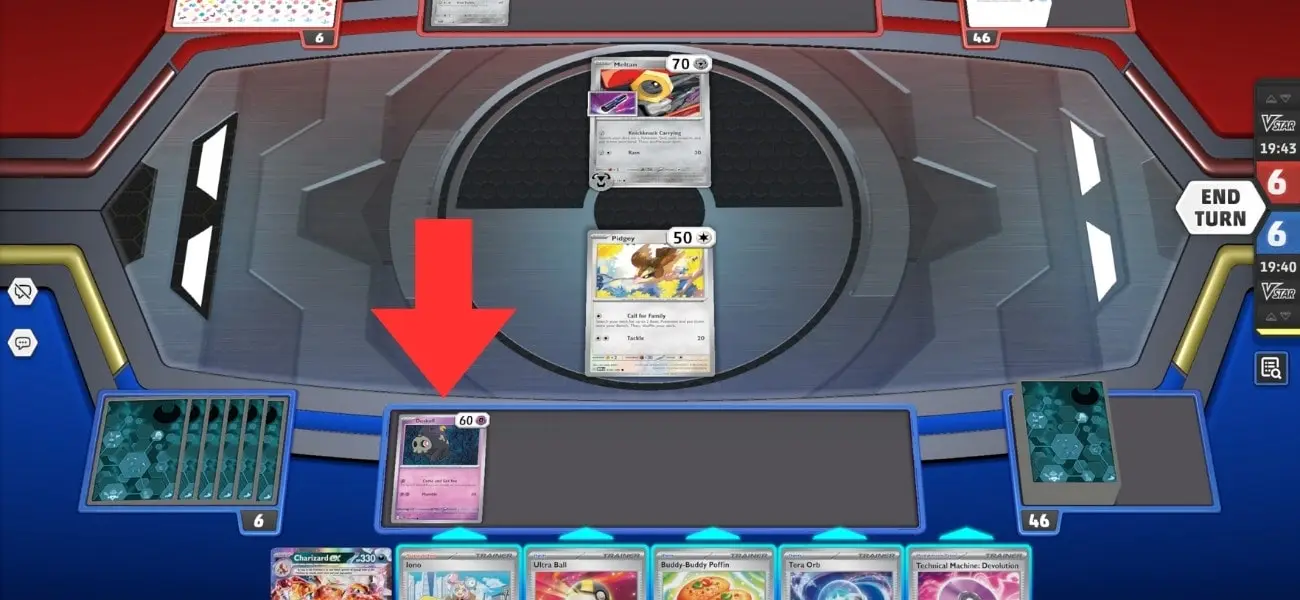
The most Basic thing you can do- you need Pokémon on your bench. No exceptions. Even one Basic on the Bench is enough to prevent a loss if your Active gets KO’d. And that lone Pokémon might even evolve into something that hands you a win in the late-game.
2. Don’t Overfill The Bench Without a Plan
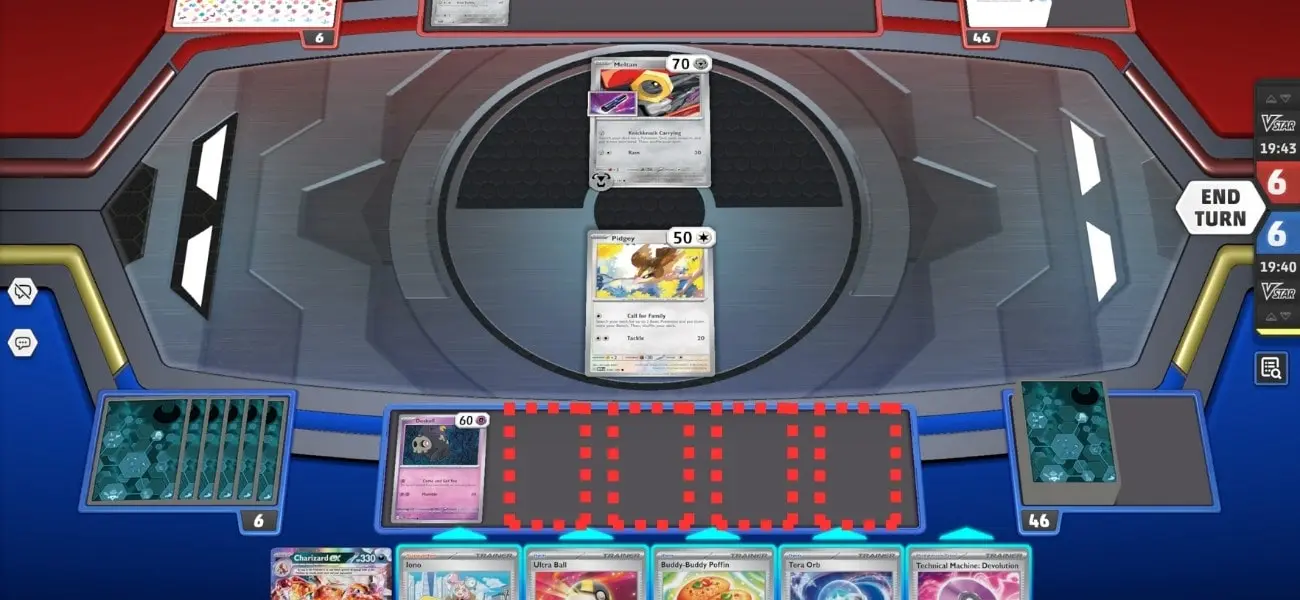
Populating your bench with reserve Pokémon is generally a good thing. But overfilling the bench is a trap if you:
- Can’t evolve or use their Abilities.
- Run out of space for other Pokémon.
- Are playing against a bench damage deck and become vulnerable.
Remember, you don’t have to bench Pokémon if you don’t want to.
Plan ahead instead.
Ask yourself- can the Pokémon be powered up, attack, or otherwise be utilized within the next few turns? If so, bench it. If not, consider holding it in your hand for later use and saving some bench slots.
3. Save Room for Support Pokémon
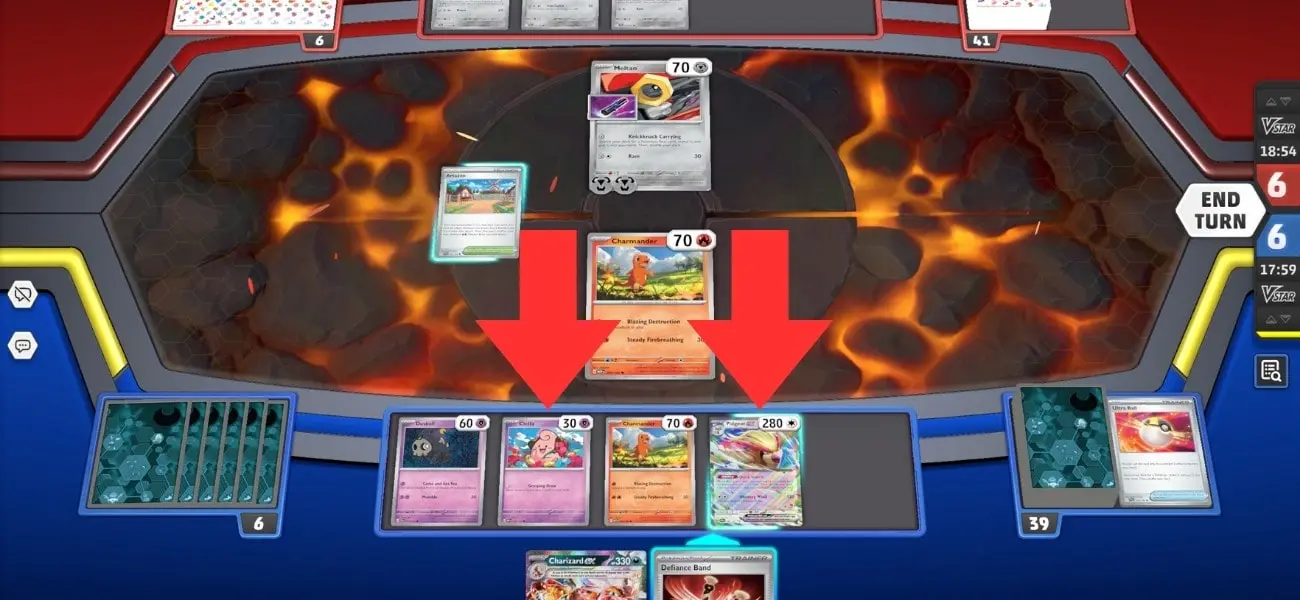
These are Pokémon cards that have abilities that help set up your main attackers. Popular Support Pokémon in the current meta include:
- Pidgeot ex (OBF 164)– searches your deck for any card.
- Squawkabilly ex (PAL 169)– discards and draws a new hand.
- Gardevoir ex (SVI 086)– accelerates Psychic energy onto your Pokémon.
There is a wealth of Support Pokémon to choose from, and which ones you decide to use depends on how you build your deck.
But one thing’s for sure- you want space on your bench to play these guys.
4. Defend Against Bench Snipers
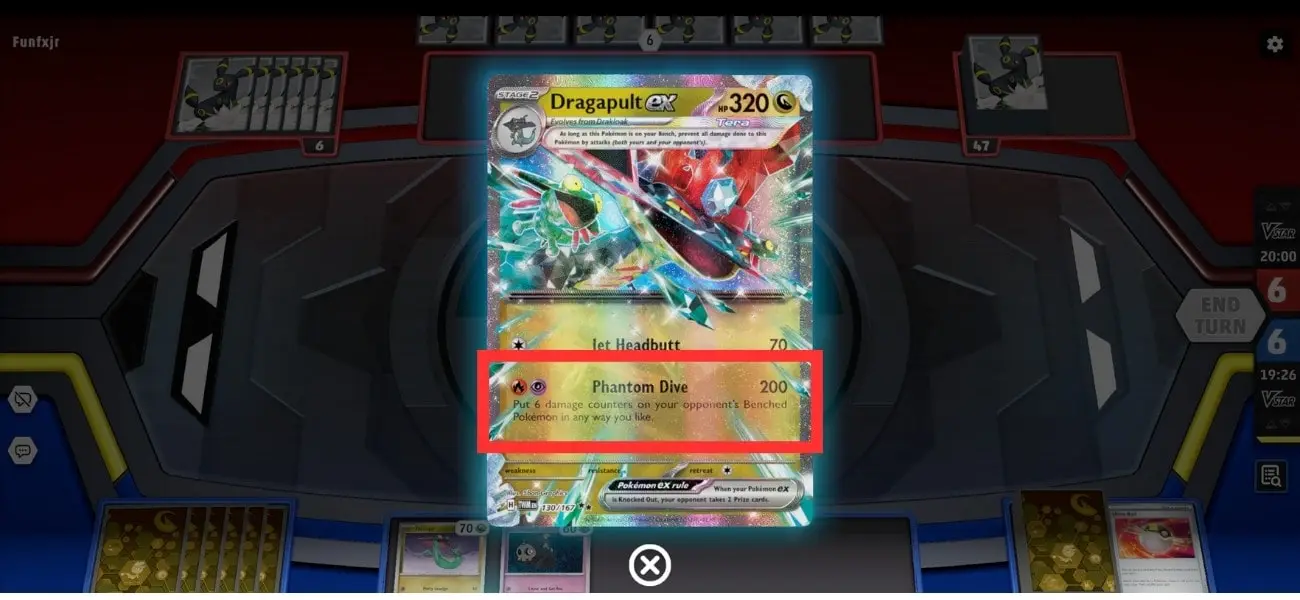
Sniping at the bench for sneaky knockouts is a popular strategy in the current competitive landscape. Examples of bench attackers include:
- Dragapult ex (TWM 130)– spreads 60 damage across the bench, which can take strategic KOs or set up future KOs.
- Garchomp ex (PAR 038)– hits a benched Pokémon for 120 damage, which is enough to one-hit KO most single-prize Pokémon.
- Hawlucha (SVI 118)– drops 1 damage counter on two benched Pokémon.
Manaphy’s Wave Veil ability, which protected your Bench from taking damage, used to be the go-to for bench protection. But it’s since been rotated out.
In the current format, Tera Pokémon have built-in Bench immunity- they can’t take damage while benched.
Fingers crossed for a dedicated bench protector like Manaphy in future sets!
5. Use the Bench to Heal, Hide, and Set Up
If your Active Pokémon is limping, retreat it to the Bench. You can then keep it out of harm’s way or even heal it with Trainer cards like Bianca’s Devotion (TEF 142). Alternatively, attach energy for a future comeback. Retreating also removes Special Conditions, which can save the Pokémon from a KO.
Conclusion
The Bench in Pokémon TCG is where games are quietly won. Every strong deck relies on a Bench strategy for setting up plays two or three turns ahead.
So next time you play, don’t just focus on the Active Spot. Watch your Bench. Build on it. Use it. Protect it.
FAQ
Kalam is a PTCG gameplay expert and content creator. He started playing and collecting Pokémon cards since 1996. When he’s not working, you can find him nerding out on Anime!
Ready To Master PTCG?

